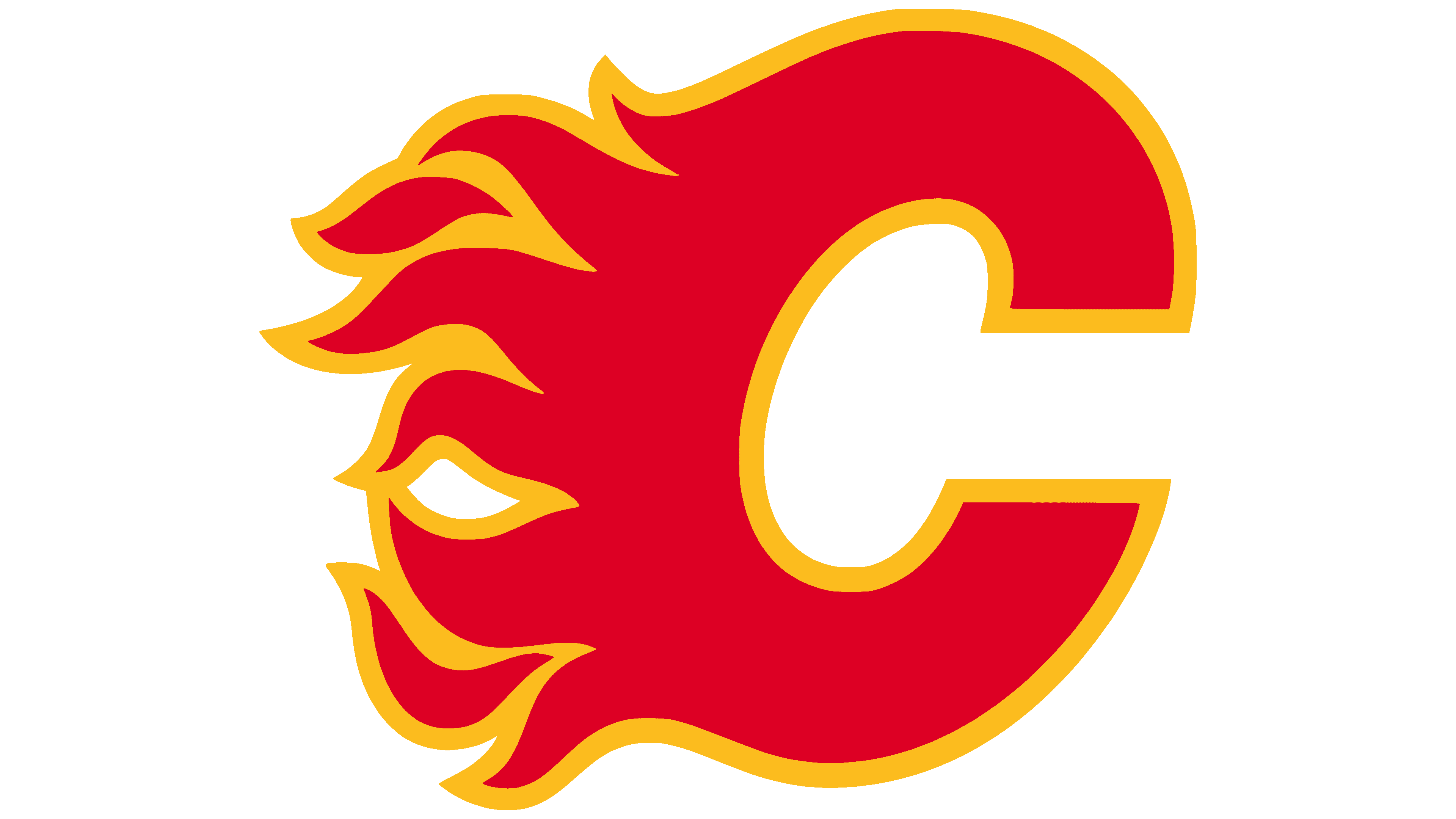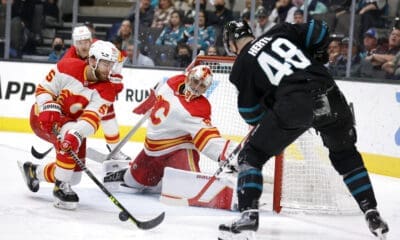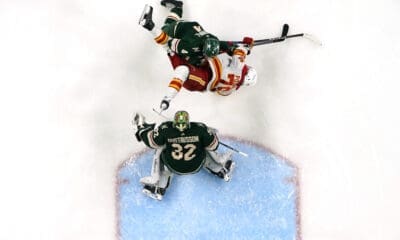Calgary Flames
Calgary Flames vs Pittsburgh Penguins stats recap: Special teams good! Even strength terrifyingly bad
The Flames had a bad game. They had surprisingly good special teams, but despite that being the lone positive from the game, they still couldn't score. Rafa Diaz, though… keep him up there.

Well, a rebuilding team is still a rebuilding team, no matter how many wins they have. And make no mistake about it, the Calgary Flames are still very much a rebuilding team. They’re only in year two, after all! And while the team has been pleasantly surprising this season, duds are going to happen.
Last night was definitely a dud. The Pittsburgh Penguins are a better team than the Flames, with better players. Some players they had to do a lot of losing in order to draft. A lot more than the Flames ever have.
At first glance, when we look at the all situations corsi chart via HockeyStats.ca, things look okay:
The Flames were completely dead in the water to start the second, but had a wonderful resurgence over the second half of the game to try to get back in it.
The problem? That's about when the Flames started getting powerplays. The 5 v 5 even strength corsi chart tells a much, much different story:
Y i k e s. That's abhorrent. Don't let the Flames have the extra man, and there's almost nothing there. There's no magical third period to be found here at all. And this is with a team that should have been pressing, big time, to try to even it up while the game was still within reach (and a three-goal deficit at the start of the third is very overcome-able).
The even strength shot plot, from War on Ice, only compounds just how bad it was:
The Penguins were trying from pretty much everywhere. Jonas Hiller didn’t have the best night, but also, look at where all those goals came from: right in the slot, or pretty close to it, with even more unobstructed shots originating from there. He got very, very little help, and he had to deal with a lot.
The Flames plot, on the other hand, is barren. Marc-Andre Fleury had a couple of nice saves to ensure his shutout, and the Flames did get in the good areas a few times, but there’s barely anything there. The right side is almost completely empty. They were thoroughly dominated.
The period by period numbers, via NaturalStatTrick, reaffirm this. Good special teams – terrible even strength play.
Flames vs Penguins - All Situations

Flames vs Penguins - Even Strength

- The powerplay breakdown: one for the Flames in the first, two in the second, and one in the third. The Penguins had three powerplays in the second, but one of those was a double minor courtesy of David Jones, about three minutes of which transferred to the start of the third period.
- It’s important to focus on even strength because the majority of the game is played at even strength. And at even strength, the Flames were terrible.
- Calgary needed powerplays to get going, period. They spent half the second period without any shot attempts, only to finally ramp it up once they got a powerplay.
- The third period is an anomaly because just five minutes in, the Penguins increased their lead to 4-0, and the Flames were effectively done. The Penguins let up on them. The Flames got more chances, but only once it was too late.
- There’s a silver lining you can take from this. The Flames’ powerplay has been absolutely dismal as of late, but last night, it was fantastic. No goals were scored, but the Flames at least had the puck.
- And the same positives extend to the penalty kill. The Flames rarely take penalties, which plays a part in them having one of the worst penalty kills in the league. And yet they completely blanked the Penguins. Evgeni Malkin had five minutes of powerplay time, and Sidney Crosby and David Perron weren’t far behind him. And yet… no goals. That’s something this team should be proud of.
Flames Even Strength Data
- First off: the Flames had eight minutes of powerplay time, which is why a lot of the even strength ice times look so low. Mark Giordano, Mikael Backlund, Mason Raymond, and Rafa Diaz all played more than five minutes on the powerplay, while Jiri Hudler was at four and a half. They also had to kill six minutes’ worth of penalties: Giordano played nearly four minutes on the kill, TJ Brodie three and a half, and a number of Flames around or above two minutes.
- At the very top of the possession list is the bottom defence pairing of Diaz and Deryk Engelland. The reason for that, despite their poor zone starts? They primarily faced off against the Penguins’ fourth line and bottom defencemen, and the Pens are a very top-heavy team without adequate depth. It took Zach Sill 48 games to get his first NHL point, if you want to know exactly who they were facing.
- (Diaz was by far and away the best possession player for the Flames at all situations, as well. He had a CF of 76.47% when you add in all those powerplay minutes he played. Nobody else even approached 70%. Diaz on the powerplay is a very good look.)
- Brandon Bollig and Matt Stajan were pretty much in the same position as the bottom pairing. Completely buried in regards to zone starts, but man, the Penguins’ depth is atrocious. They played garbage competition and came out on top (more thanks to Stajan than Bollig). The Flames don’t have the top talent the Pens do, but at least their fourth line isn’t that terrible.
- Paul Byron was their next most frequent linemate, but he was entrusted with more minutes and against significantly better competition. He ended up playing with Josh Jooris and Lance Bouma a bit in the third. He also faced off against Crosby for 4:36 at even strength, about three more minutes of him than Bollig or Stajan saw. Going against Crosby will kill your possession numbers. He’s very good.
- Credit favourable zone starts for Sean Monahan and Johnny Gaudreau. They played against the Pens’ top defence pairing of Kris Letang and Paul Martin, and were significantly better when away from Martin (Letang actually generated very little offence against them). They also played against a healthy mix of Penguin forwards, and while Crosby completely shut them down, they fared well against Malkin.
- Hudler got a little separated from the kids, but his performance was about on their par.
- The top defence pairing of Brodano spent about 15 minutes combined on special teams. That’s a lot. And then they had to contend with even strength, and while they had favourable zone starts, I’m sure you can guess who they played against. Giordano spent about nine even strength minutes against Pittsburgh’s top line. Brodie, 10. Both were able to at least break even when away from the top dogs, but against them, they had bad nights. Again: Crosby is super good at hockey.
- Kris Russell ended up with worse possession stats than Dennis Wideman. He played more at even strength in a game in which his team was crushed, so that’s one reason why. Another is to look at his zone starts: Flames who started more often in the offensive zone also played more often against the very, very good Pens players. Although the pair did see more of Malkin than Crosby, and Malkin didn’t have nearly as good a game as the Canadian golden boy. Russell just ended up caught out there for five more corsi events against than his partner over the additional minute.
- With Hartley desperate in the third, the lines got chucked in a blender, so a lot of the usual groupings just disappeared. Raymond got hit particularly hard, barely able to get anything resembling offence going when not on the powerplay. (Over the five and a half minutes he played on the powerplay, he had an additional 17 CF in his favour.)
- Backlund and Bouma were very sheltered in terms of offensive zone starts. Bouma ended up seeing more of the top line, while Backlund was eventually given the matchup against Malkin.
- The forward Crosby faced the most? For some reason, the rookie known as Jooris. He actually did surprisingly well against him, all things considered… Crosby was a bit better when away from Jooris, and Jooris’ numbers didn’t change much when separated from Crosby. Of course, his all around numbers were still pretty bad.
- Joe Colborne and Jones received the same zone starts, although they never once shared the ice. Colborne spent most of his time alongside Jooris, whom he was better away from; Jones, with Backlund and Bouma, whom he improved from away as well. (Because then he was playing with the fourth line guys, who were facing abhorrent competition.)
Player Spotlight - Rafa Diaz
Even strength is depressing. There was very little good in this game. But let's at least try to end on a positive note, yeah? Diaz has found a new home on the powerplay, and last night, he spent a lot of time alongside Giordano on the first unit. Now, some aspects of the unit were questionable – mostly the extremely heavy usage of Raymond at the expenses of Monahan and Gaudreau – but Diaz looks like he might be a better option than Wideman up there. (Of course, it should still be Brodie on a unit with Giordano, but we're talking Diaz now.)
So without further adieu, here are Diaz's numbers with his teammates, in all situations:
Is Diaz good because of his time on the powerplay, or did the powerplay look noticeably better because of Diaz’s much extended role on it? Guess he’ll need more powerplay time to determine this. You know this totally means his days as a healthy scratch are over, Ladislav Smid’s return be damned? I mean, you aren’t going to scratch one of your powerplay defencemen for him. Ever. Yay! It’s about time we reached this stage of acceptance. He’s relatively young, he’s mobile, and he has an absolute cannon of a shot. At the very least, he’s earned an extended look, but it should really be his to keep now.
by Ari Yanover








